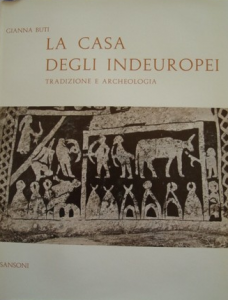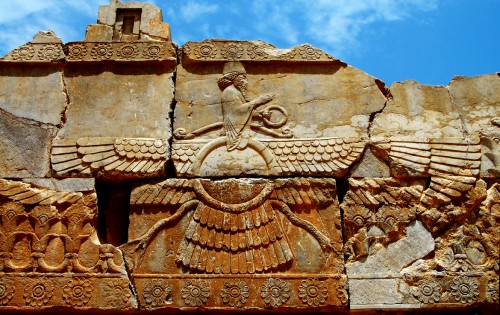
Jean-Paul LIPPI:
Pour une entrée en Tradition
Prolégomènes à une métaphysique opérative
L'idée de Tradition, au sens guénonien du terme, connaît aujourd'hui un incontestable regain d'intérêt dans des milieux encore quantitativement restreints mais qui n'en paraissent pas moins appelés à jouir d'une influence grandissante, encore que celle-ci doive surtout, de par sa nature “subtile”, se faire sentir sur un plan très largement ignoré du grand public. De même, un certain nombre de personnes, légitimement insatisfaites des réponses apportées par le monde moderne à leur exigence spirituelle, poursuivent, le plus souvent à titre individuel, une recherche dans ce domaine, en s'appliquant à éviter autant que faire se peut les pièges d'un spiritualisme dévoyé et humanitariste. Devant cette situation, nous voudrions tenter d'apporter dans les lignes qui vont suivre une clarification quant à la véritable nature de la “Tradition” dont les premiers se réclament et à laquelle les secondes aspirent. Il nous semble en effet que le mot, s'il n'est pas toujours, à proprement parler, galvaudé, n'est que trop rarement employé dans la plénitude de sa signification, des valences secondaires lui étant trop fréquemment attachées. Cette volonté de clarification nous conduira également à préciser ce qu'il convient d'entendre, dans l'optique Traditionnelle, lorsque référence est faite à la “métaphysique”.
Envisagé dans la plénitude effective de sa définition, le mot “Tradition” ne désigne essentiellement nulle autre chose que la perception de l'immanence de la Transcendance, suivie de la transmission doctrinale de la possibilité de cette perception. Est donc “traditionniste”, pour employer le néologisme forgé par Pierre A. Riffard (1), tout homme qui vit hic et nunc cette Transcendance, c'est-à-dire qui ressent dans son Esprit, son âme et sa chair ― indissociablement ― l'action de celle-ci, sur le plan tant personnel qu'historique et / ou politique. Les mots n'étant que ce qu'ils sont, cette sensation renvoie, dans ses profondeurs ultimes, au registre de l'indicible, ce dont les adversaires de la vision du monde Traditionnelle ne manquent pas de tirer argument pour reléguer cette dernière au rayon des sous-produits de l'idéalisme, quand ce n'est pas à celui des délires quasi-psychotiques. Dans ce dernier cas, la volonté de vivre l'enseignement Traditionnel est ramené à un phantasme de réunification fusionnelle, affirmé fondé sur la nostalgie refoulée de l'état de non-séparation entre mère et nourrisson. Il n'est plus alors question de dépassement de la condition humaine et de rattachement au divin, mais au contraire de régression, soit intellectuelle soit affective, soit les deux à la fois. L'expérimentation de la Transcendance, identique, dès lors qu'elle est stabilisée, à la re-divinisation, ne s'analyse plus, dans le cadre de cette conception spirituellement mutilante, que comme une hallucination, provoquée par le désir angoissé d'échapper à la condition d'être « marqués par leur radicale finitude », ainsi que l'écrit un auteur par ailleurs intéressant mais qui n'en confond pas moins trop facilement la pensée de la Tradition avec sa parodie New Age (2).
En réalité, que l'appel à l'Esprit puisse effectivement, dans certains cas, cacher un malaise existentiel, le fait n'est pas niable, encore que les conséquences en soient parfois, même dans ces conditions, bien plus positives qu'on ne veut bien l'admettre (3). Mais vouloir à toute force tout ramener à cela, généralement, d'ailleurs, pour les besoins d'une cause partisane, philosophique ou religieuse, plus ou moins avouée revient à adopter l'attitude moderne par excellence qui consiste à toujours prétendre expliquer à bon droit le supérieur par l'inférieur, et à ne reconnaître in fine de légitimité au premier que du moment que l'on est (croit-on) parvenu à le réduire au second (4). Face à une contestation ainsi dirigée, la réaction des hommes de Tradition ne peut être d'engager la discussion selon une tactique “arguments / contre-arguments”, ceci en raison du caractère d'indicibilité ultime de l'expérience de l'immanence de la Transcendance mentionné plus haut. Il n'est pas pour autant question pour eux de se draper dans leur superbe pour mieux poitriner aux quolibets, ni davantage de reprendre à leur compte quelque saugrenu credo quia absurdum, mais simplement de relever que l'affirmation et sa réfutation ne sont pas, en l'occurrence, au même niveau, qu'elles ne renvoient pas, précisément, au même registre. C'est pourquoi il n'y a, à parler strictement, rien à répondre à qui nie la possibilité d'atteindre ― c'est-à-dire de retrouver ― des états de conscience supérieurs à celui partagé par l'immense majorité de factuelle humanité, ou, à plus forte raison, qui rejette l'éventualité même de l'existence de ces états. Ce qui doit parler ici, c'est seulement la force de l'exemple. Non que chacun soit libre de le suivre ou non, d'accepter ou de refuser la transmission (le tradere) de la doctrine puis de s'engager dans l'expérience de la Transcendance vécue en mode immanent. Il y a tout au contraire en ce domaine comme l'effet d'une Grâce (si l'on veut s'exprimer à la manière des théologiens) qui détermine pour chacun, au moins dans les conditions de son existence présente, une manière de prédestination (5).
On comprend aisément que ce vécu immanentiste de la Transcendance soit plus que difficilement compatible avec toute forme d'exclusivisme religieux, surtout militant et prosélyte. La forme, certes nécessaire sur son plan propre, que telle ou telle religion donne à l'expérience de la Transcendance a en effet pour conséquence inévitable de “figer” celle-ci dans son expression, ce par le mouvement même dans lequel elle en dévoile l'existence ; c'est pourquoi une religion peut être tout aussi bien un chemin d'accès à l'Absolu que l'occasion d'un piétinement, si ce n'est d'un égarement, spirituel. Nous retrouvons ici la distinction bien connue de l'ésotérisme et de l'exotérisme, distinction qui repose en dernière instance sur la faculté de passer, littéralement, “au travers des formes”. Il faut également souligner qu'un tel vécu interdit le culte de tout “impératif catégorique” moral, quelle qu'en puisse être la source. Dût ceci choquer certains parmi nos lecteurs, nous affirmons que la Tradition, parce qu'elle est d'essence métaphysique, ne saurait être en aucune manière “morale”. Si l'on veut authentiquement retraduire en langage normatif l'expérience des états supra-humains, c'est sur le plan de l'éthique et non sur celui de la morale qu'il convient de se situer, la seconde étant universaliste par définition alors que la première est différentialiste au sens où elle ne connaît d'autre loi que celle qui s'impose, à des fins de conservation (6), à un être particulier en fonction de sa nature propre, c'est-à-dire en fonction du niveau d'expérimentation de la Transcendance dont il est effectivement capable. Que des normes soient ― si l'on peut dire ― encloses dans chacun des « états multiples de l'Être » (7), nous ne songeons nullement à le nier. Mais, précisément parce que chaque norme est consubstantielle à l'état au niveau duquel (et à partir duquel) elle se manifeste, aucune d'entre elles ne saurait se prévaloir d'une validité universelle (8). C'est pourquoi celui qui atteint l'Absolu ne peut plus connaître de normes, puisqu'il les a toutes expérimentées et finalement dépassées, un tel être devenant donc « à lui-même sa propre Loi » (9). La morale possède certes sa justification sur le plan qui est légitimement le sien, celui de l'aide apportée, si l'on veut à la manière d'une béquille, aux individus incapables de se rendre authentiquement libres et donc de se tenir debout par leurs seules forces. Mais lui accorder une valeur éminente, c'est couper l'accès à l'Absolu, en bornant l'expérience de la Transcendance à l'un des niveaux de la Manifestation illusoirement posé comme ultime. De fait, l'Absolu ne mériterait pas son nom s'il ne contenait toutes les normes, y compris les plus “immorales”, chacun des « états multiples de l'Être » manifestant telle d'entre elles selon sa potentialité et sa valence particulières. Dès que conscience est prise de ceci, le refus d'un comportement quelconque ne peut plus se fonder sur des préceptes affirmés valides dans l'universel, mais uniquement sur l'affirmation de valeurs supérieures d'un point de vue métaphysique, c'est-à-dire témoignant d'un état de l'Être plus élevé et contenant de ce fait les précédents états qu'il dépasse selon le principe de l'intégration hiérarchisante. Repousser cette conception revient à rejeter principiellement la nécessaire dimension destructrice de l'Être et donc à mutiler intellectuellement l'Absolu.
Ces précisions indispensables étant apportées, la Tradition commence à apparaître sous son jour véritable. Ce dont celle-ci témoigne, c'est d'une Connaissance expérimentale, celle de la présence active de forces non-humaines dans le monde des hommes. Mais il faut prendre garde de n'enfermer la formule dans une dimension ni étroitement théiste ni, à l'inverse, vaguement “occultisante”. Ce qui est évoqué ici, ce n'est pas faction providentielle d'un Dieu personnalisé ou les agissements de “Supérieurs Inconnus” et autres entités plus ou moins désincarnées. Que de pareilles choses appartiennent au possible ― et tout particulièrement les secondes ―, nous ne songeons pas le moins du monde à le nier. Mais il s'agit là de phénomènes qui renvoient, du seul fait qu'ils sont, précisément, des phénomènes, au domaine de la physique (10), non à celui de la métaphysique. La Connaissance Traditionnelle, de nature authentiquement métaphysique parce que d'essence contemplative, est celle de l'Action, impersonnelle et détachée, de l'Absolu en tant que Source d'où jaillissent et où retournent s'anéantir tous les contraires dyadiquement unis dont l'entrelacs cosmique forme la trame de la Manifestation (11). La perception de l'immanence de la Transcendance repose sur la contemplation de (et la participation à l'éternel maelström d'Énergie qui danse sans début ni fin au sein du Vide universel comme dans le Cœur de l'Homme (12), maelström que l'Hindouisme représente par l'image du Shiva Nataraj dans un cercle de flammes (13). C'est sur cette base qu'il revient à chacun, s'il en ressent la vocation et entend l'appel de ce qui en lui est plus que simplement humain, de tenter, au risque très réel d'y perdre la raison et sans doute bien davantage, de faire sien ce « chaos vivant dans lequel est contenue chaque possibilité » (14), d'unir indissolublement en lui-même Connaissance et Puissance, ce qui est la seule manière réelle de dépasser tout aussi bien le nihilisme (Connaissance désespérée car sans Puissance) que le titanisme (Puissance enivrée car sans Connaissance). Si la quête vient à être couronnée de succès, celui qui l'aura menée à terme en recueillera les lauriers destinés à ceux auxquels il a été promis qu'ils re-deviendraient “comme des dieux”, c'est-à-dire qu'ils retrouveraient leur nature originelle non bornée. Toute la légitimité de la Voie tantrique, plus spécialement dans son orientation dite “de Main Gauche”, en tant que mode de déconditionnement et de réintégration au Divin reposant sur une intensification énergétique appropriée aux conditions du Kali Yuga, est là.
Cette mention du caractère originellement non borné ― donc essentiellement et absolument libre ― de la nature humaine, caractère qui la constitue immédiatement en tant que « préternature » selon la formule de Pierre Gordon (15), nous conduit à examiner le sens du mot “métaphysique” tel que l'emploient les traditionnistes afin de dissiper une confusion. En effet, la métaphysique Traditionnelle n'est pas la métaphysique moderne, celle des traités de philosophie rédigés dans le sillage du réductionnisme ontologique aristotélicien (16), même si l'assimilation est aujourd'hui trop répandue qui mène à ne voir dans la métaphysique qu'une espèce de sous-catégorie de la philosophie au surplus rendue obsolète par les prétendues conquêtes intellectuelles du positivisme logique (17). Or la métaphysique n'est pas la philosophie mais autre chose et davantage que celle-ci ; l'opposition complémentaire des deux disciplines renvoie à celle du sacré et du profane, et leur confusion en dit par elle-même long sur l'état réel du monde moderne (18). Non que la seconde soit dépourvue de sens et donc de légitimité. Mais la quête du Vrai qui la constitue et la « passion de la vérité » (19) qui l'évertue ne peuvent prétendre, du simple fait que la philosophie est une démarche tout humaine avec les limitations que cette qualification implique, s'élever au-dessus des horizons de l'intelligence logico-conceptuelle et spéculative. D'où la volonté, chez ceux qui en tiennent pour la thèse de la métaphysique philosophique, de parvenir à l'élimination de celle-ci.
Le cas d'un Ludwig Wittgenstein est de ce point de vue tout à fait significatif. En écrivant la phrase fameuse qui clôt le non moins fameux Tractacus (20) : « Ce dont on ne peut parler, il faut le taire », celui-ci n'aurait fait qu'énoncer une banalité fort peu “philosophique”, s'il n'avait eu pour projet, ce faisant, de mettre fin à la métaphysique en démasquant derrière celle-ci une faiblesse logique, létale selon lui, qui proviendrait du caractère d'au-delà du langage qu'il lui impute. « La juste méthode de philosophie serait en somme la suivante : ne rien dire sinon ce qui se peut dire, donc les propositions des sciences de la nature ― donc quelque chose qui n'a rien à voir avec la philosophie ― et puis à chaque fois qu'un autre voudrait dire quelque chose de métaphysique, lui démontrer qu'il n'a pas donné de signification à certains signes dans ses propositions. Cette méthode ne serait pas satisfaisante pour l'autre ― il n'aurait pas le sentiment que nous lui enseignons de la philosophie ― mais elle serait la seule rigoureusement juste », lit-on un peu plus haut (21) dans le même ouvrage. Mais la métaphysique que Wittgenstein poursuit de sa vindicte n'est que la métaphysique des philosophes, non la seule métaphysique que l'on doit tenir pour authentique précisément parce qu'elle se situe par-delà les enchaînements purement logiques (formels) de la philosophie, ce que l'emploi synonymique des deux termes dans le passage cité montre sans hésitation possible.
De la métaphysique authentique, on ne saurait d'ailleurs dire qu'elle est indicible formellement, même si elle le demeure, avons-nous dit, fondamentalement, l'indicibilité métaphysique de l'Absolu par le relatif que constitue le langage étant tout autre chose que l'indicibilité absolue de la métaphysique, ce dans la mesure où, si le signe n'est certes pas le sens, il n'en représente pas moins sa trace. Trace à dire vrai moins rémanente qu'actualisante et même incitatrice, car le sens, s'il fallut qu'il fût “voilé” ― ou encore “abrité” ― comme tout ce qui possède Gloire (22), appelle de ce fait son nécessaire dévoilement, non dans les rêveries “mystiques” au douteux parfum d'évasionnisme pseudo-spirituel (et au goût trop réellement infernal) chères aux zélateurs du soi-disant “Nouvel Âge-à-venir-pour-nous- apporter-le-bonheur” (23), mais dans le recueil patient des modalités horizontalement divergentes et verticalement convergentes de l'être-là. À cette nécessité du recueil peut seule faire droit la réconciliation de l'Attention, qui enveloppe amoureusement du regard le monde phénoménal, et de la Contemplation, qui transperce ce même monde pour atteindre au Mystère du « supramonde », lequel est aussi et tout autant un « intramonde ». Car, puisque le Monde est essentiellement un du Principe au plus bas étage de Sa manifestation (24), connaître, ce ne peut être voir simplement au-delà des formes mais également au travers de celles-ci, ce qui suppose que soit préalablement renversée en soi-même l'opacification, contrepartie individuelle de la « solidification du monde » (25), qui s'oppose à l'acuité du Regard. La « perspective métaphysique » (Georges Vallin) repose ainsi en dernière instance sur l'élection continuée de l'ascèse du diaphane. La formule selon laquelle « ce qui concerne la métaphysique, c'est ce qui est au delà de la nature » (26) est évidemment indiscutable, mais celle qui affirmerait que « ce qui concerne la métaphysique, c'est ce qui transparaît au travers de la nature » le serait tout autant. Ne serait-ce que parce que « la nature tout entière n'est qu'un symbole des réalités transcendantes » (27).
Si Wittgenstein, pour en revenir à lui, était parvenu à dépasser le simple niveau de la métaphysique des philosophes, il aurait pris conscience que ce dont on ne peut parler demande moins à être tu qu'à être vécu, car « ce dont il s'agit (pour (le métaphysicien), c'est de connaître ce qui est, et de le connaître de telle façon qu'on est soi-même, réellement et effectivement, tout ce que l'on connaît » (28). C'est pourquoi, après avoir écrit que « le monde est indépendant de ma volonté » (29), il aurait pu ajouter, en toute orthodoxie Traditionnelle (et “tantrique”) que ma volonté peut à son tour se rendre indépendante du Monde, et donc, à la fin, rendre le Monde dépendant d'elle, en s'enracinant dans ce qui transcende les phénomènes, c'est-à-dire en devenant identique à l'objet de ma Connaissance. Mais Wittgenstein, en tant que philosophe, ne peut pas ne pas être prisonnier des limitations formelles de la logique, et plus particulièrement de la formulation aristotélicienne du tiers-exclu, d'où sa conviction que « de même qu'il n'y a qu'une nécessité logique, il n'y a qu'une impossibilité logique » (30), ce qui l'amène à tenir pour « clair que le produit logique de deux propositions élémentaires ne peut être ni une tautologie ni une contradiction » (31), sans qu'il se doute apparemment que la notion de “contradiction” n'est elle-même qu'une conséquence de l'adoption d'un schéma exclusivement logique, schéma qui peut être dépassé par l'intuition de la non-contradiction absolue des contraires. Intuition intellectuelle, bien entendu, et non psychologique, donc essentiellement contemplative et non discursive, ceci parce qu'« en toute conception vraiment métaphysique, il faut toujours réserver la part de l'inexprimable ; et même tout ce qu'on peut exprimer n'est littéralement rien au regard de ce qui dépasse toute expression comme le fini, quelle que soit sa grandeur, est nul vis-à-vis de l'Infini » (32).
Cette dimension apophatique de la Connaissance, aucun système philosophique ne saurait l'admettre, simplement parce que, en tant que système, il est une “mise en discours” du Monde, le non-discours étant assimilé par les esprits systématiques au non-sens (33). D'où l'illusion dont est victime, après et avec bien d'autres, Wittgenstein et qui lui fait croire que « le sens du monde doit se trouver en dehors du monde », parce qu'« il n'y a pas en lui de valeur ― et s'il y en avait une, elle n'aurait pas de valeur » (34), alors que le sens du Monde réside, tout au contraire, dans la manifestation mondaine du sens, lequel, s'il n'est pas de ce Monde, n'en est pas moins dans ce monde. Pour le métaphysicien traditionniste, la radicale contingence des événements pointés dans le Tractacus (35) par la formule : « Car tout événement et être-tel ne sont qu'accidentels. Ce qui les rend non-accidentels ne peut se trouver dans le monde, car autrement cela aussi serait accidentel », cède la place à la signifiance, tout aussi radicale parce que nécessaire, de l'avènement décrypté par la pensée analogico-symbolique dont le déploiement constitue proprement l'ésotérisme. Le principe de l'homogénéité du Monde, que la Table d'Émeraude énonce, on le sait, sous la forme célèbre : « Ce qui est en bas est comme ce qui est en haut », implique celui de l'homogénéité du sens, ce qui signifie que toute chose, même celle apparemment la plus insignifiante, est susceptible d'un dévoilement, non dans la singularité de sa présence mais par sa mise en relations avec l'ensemble des choses autres qu'elles-même, ensemble que le Tout recueille sous l'égide de l'Unité. Le rôle des symboles, dont chacun manifeste le Tout en récapitulant, sous la forme particulière et selon la logique articulatoire qui lui sont consubstantielles en raison des contingences ethno-historiques (36), la somme des relations universelles, est de rappeler cette homogénéité tout en offrant sous une forme voilée les moyens du dévoilement, lequel culmine dans la gnose. C'est pourquoi René Guénon peut affirmer que le symbolisme est « le moyen le mieux adapté à l'enseignement des vérités d'ordre supérieur, religieuses ou métaphysiques, c'est-à-dire de tout ce que repousse ou néglige l'esprit moderne » (37).
Si la philosophie demeure par nature étrangère à toute possibilité (et même à toute finalité) de Réalisation, la métaphysique, en revanche, prend en compte, ainsi que nous l'avons vu, l'obligation pour qui veut réellement connaître de devenir ce qu'il connaît, sans limitation aucune ― c'est-à-dire sans plus succomber à l'illusion suprême, celle de l'opposition du sujet et de l'objet ―, l'« affirmation de l'identification par la connaissance » s'identifiant elle-même au « principe même de la réalisation métaphysique » (38). Cette identification conduit dès lors à la Réalisation, non certes tout un chacun, mais ceux qui se montrent capables d'y parvenir au travers des épreuves, « car il y a, pour certaines individualités humaines, des limitations qui sont inhérentes à leur nature même et qu'il leur est impossible de franchir » (39). Ce n'est par conséquent nullement s'opposer à la pensée de la Tradition que d'affirmer que la métaphysique véritable se distingue aussi de la métaphysique moderne par son caractère essentiellement élitiste. René Guénon lie en effet explicitement “intellectualité” (dans le sens de “capacité d'accès à la gnose”) et “élite” ― par ex. dans la formule suivante : « Il ne peut y avoir qu'un seul moyen de sortir du chaos : la restauration de l'intellectualité et, par suite, la reconstitution d'une élite » (40) ― et précise que si l'Occident connut au Moyen Âge « des doctrines purement métaphysiques et que nous pouvons dire complètes », celles-ci demeurèrent toujours réservées « à l'usage d'une élite » (41). Quant à ceux que leurs « limitations » empêchent d'accéder à la Connaissance pleine et entière, il reste le secours des dogmes et de la foi (42).
Cette Réalisation que permet la démarche métaphysique et sans laquelle elle ne se justifierait aucunement (43), n'est en réalité rien d'autre qu'une ré-intégration, la restauration de l'« état primordial » qui est « celui qui était normal aux origines de l'humanité, tandis que l'état présent n'est que le résultat d'une déchéance, l'effet d'une sorte de matérialisation progressive qui s'est produite au cours des âges, pendant la durée d'un certain cycle » (44). Il s'agit donc bien moins de se rendre autre que l'on est que tel que l'on fut, ou, pour le dire avec une plus grande précision, de se ressaisir ainsi que l'on est toujours demeuré depuis il Origine, même si l'on avait oublié ce que l'on était. Ce ressaisissement, en tant que sortie hors de l'illusion du temps et accès à l'Éternité (45), est ainsi identique au « déchirement du Voile » qui dissimule la Réalité suprême (46).
Discipline éminemment pratique, opérative, si l'on considère le mot dans la plénitude de son acception ― en tant que voie de réalisation ―, la métaphysique l'est tout autant si on l'envisage de manière complémentaire comme grille d'intellection universelle. En tant qu'elle possède par nature le statut de métalangue par rapport à tous les énoncés ou vision du monde d'origine et de nature uniquement humaine, la perspective qui est sienne peut en effet légitimement s'appliquer à l'analyse des formes produites par telle ou telle civilisation, y compris, bien entendu, le monde moderne. C'est sur sa base que René Guénon ouvre le chapitre premier d'Orient et Occident en fondant l'étude de la civilisation occidentale comme tératologie (47) ; sur elle encore qu'il diagnostique des « signes des temps » dans les diverses manifestations de la modernité (48) ; sur elle toujours qu'il entreprend son « œuvre d'assainissement » en en condamnant théosophisme et spiritisme (49), peu avant que Julius Evola n'entreprenne, selon la même logique, d'arracher les « masques » du spiritualisme contemporain pour en révéler les « visages » (50). C'est sur elle enfin qu'il devient possible de comprendre la signification réelle des idéologies aujourd'hui dominantes.
Ainsi du libéralisme. Pour qui est demeuré capable de voir, il est patent que les analyses sociologiques ou économiques, si elles peuvent en éclairer certains aspects, sont incapables de rendre entièrement compte de celui-ci. Envisagé d'un point de vue métaphysique, le liberalisme apparaît comme une forme de “satanisme” plus précisément comme la forme que prend ce dernier, non seulement en tant qu'« esprit de négation et de subversion » (51), mais aussi de parodie, dès lors qu'il entend agir dans le domaine idéologico-politique. L'inversion des traits propres au mode de vie Traditionnel est visible à tous les niveaux du discours libéral. À la figure de l'Initié qui n'est devenu “à lui-même sa propre Loi” que parce qu'il a triomphé des épreuves et connu la renaissance spirituelle qui le place légitimement au-dessus de la condition humaine, et donc des règles qui s'appliquent, pour son bien propre et celui de sa Communauté, à tout homme qui n'a pas dépassé cette condition, le libéralisme substitue celle de l'Individu, lequel refuse toute autorité parce qu'il ne reconnaît d'autre loi que celle du désir sans frein, ce qui fait de lui un esclave alors même qu'il proclame en tous lieux sa liberté prétendument inaliénable. De même, l'idéologie libérale ― dont la devise “Laisser faire, laisser passer” est déjà en soi une parodie, celle de l'“Agir sans agir” taoïste ― remplace la doctrine Traditionnelle de l'Harmonie spontanée, et maintenue vivante par l'interactivité universelle innervée par l'Esprit, par la fiction mécaniste du Marché autorégulateur, allant jusqu'à affirmer que, dès lors que ce dernier pourra fonctionner sans contrôle, “la somme des déséquilibres particuliers ne pourra que créer l'intérêt général”, alors que la vérité est très exactement l'inverse, à savoir que c'est “l'équilibre général” (dans le sens d'“universel”) préexistant qui garantit seul le caractère éthiquement acceptable parce que métaphysiquement signifiant de ce qui apparaît, non comme des “déséquilibres particuliers”, mais comme des “modes d'expression”, nécessairement limitée, de l'Absolu à l'un ou l'autre niveau de sa Manifestation. Les affirmations prévaricatrices du libéralisme reviennent ici à affirmer que ce qui est en haut se trouve sous la dépendance de ce qui est en bas, ce qui représente le complet renversement de l'enseignement de la Tradition. De plus, le libéralisme est structurellement incapable de présenter la hiérarchisation sociale en termes autres qu'économiques, comme le résultat des mérites respectifs d'acteurs engagés dans un éternel procès de production et d'échange de biens matériels, ce qui : premièrement, constitue un mensonge, car le processus d'accumulation du capital empêche le jeu pourtant affirmé “libre” de la promotion sociale (52) ; deuxièmement, entraîne un état de guerre de chacun contre tous en exacerbant les rivalités mimétiques et les jalousies du ressentiment ; troisièmement, aboutit à nier toute vie, donc toute hiérarchie, spirituelle, en ramenant l'expérience de l'Être au niveau de la simple recherche de la satisfaction des besoins organiques, c'est-à-dire en prônant comme valeur dominante de la Cité un comportement caractéristique des stades les plus primitifs du comportement animal.
Ainsi mis en perspective, le libéralisme se laisse saisir pour ce qu'il est vraiment, une idéologie que l'on peut qualifier d'authentiquement “infernale”, d'autant plus que la volonté de séduire pour tromper et soumettre ― signature du satanique ― ne lui fait nullement défaut. En effet, le libéralisme joue analogiquement dans le domaine idéologico-politique le rôle que joue le New Age dans le domaine spirituel, parce qu'il s'agit, ici comme là de présenter une image dégradée de la liberté en l'assimilant à l'individualisme. La différence de positionnement des discours s'explique par celle des cibles (au sens où les spécialistes du “marketing” entendent ce mot) et tient à ce que le libéralisme s'adresse à ceux qui ne conçoivent même plus une autre vie que celle de la jungle, soit qu'il leur fournisse des armes afin qu'ils deviennent de meilleurs prédateurs, soit qu'il tente de les persuader que la jungle est un jardin d'enfants pour qu'ils demeurent des proies faciles (mais il s'agit toujours de faire en sorte que la jungle ne cesse pas d'être une jungle), alors que le New Age trouve un écho chez ceux qui s'imaginent qu'il est possible d'“humaniser” et de “spiritualiser” cette jungle en y baguenaudant pour y planter des fleurs multicolores au gré de ses caprices. Dans les deux cas, le but, qui ne situe pas seulement, répétons-le, à vue humaine, est d'empêcher la transmutation alchimique de la jungle en “forêt” (au sens d'Ernst Jünger), comme prélude à la concentration intensificatrice de cette dernière en « Arbre du Monde » en tant qu'« Arbre de Vie et de l'Immortalité » (53).
Sans doute, à ce stade de l'exposé, n'est-il pas inutile de revenir, pour préciser un point fondamental que nous n'avons fait jusqu'ici qu'effleurer, sur la question de l'origine de la métaphysique. Dans la mesure où elle voit (et donne à voir) le Monde depuis un point de vue que nous qualifierions volontiers, si le mot n'était si galvaudé, de “surhumain” (54), et où elle permet, dans le même temps, le dépassement effectif de la condition désormais commune à la quasi-totalité des hommes, la métaphysique ne saurait avoir une origine humaine. Cette nécessité, à la fois principielle et logique, d'une source an-historique et non-humaine est exposée par René Guénon dans La métaphysique orientale (55) : « Ces doctrines métaphysiques traditionnelles auxquelles nous empruntons toutes les données que nous exposons, qu'elle en est l'origine ? La réponse est très simple, encore qu'elle risque de soulever les protestations de ceux qui voudraient tout envisager au point de vue historique : c'est qu'il n'y a pas d'origine ; nous voulons dire par là qu'il n'y a pas d'origine humaine, susceptible d'être déterminée dans le temps. En d'autres termes, l'origine de la Tradition, si tant est que ce mot d'origine ait encore une raison d'être en pareil cas, est “non-humaine”, comme la métaphysique elle-même ». Cette origine ne peut donc être que l'Absolu, en entendant bien évidemment ce terme dans un sens a-personnel (non-théiste) puisque les “personnifications” n'importent pas davantage en sens ascendant que descendant, ne serait-ce que parce que la notion d'un Dieu personnalisé et dans le même temps absolutisé présente une contradiction dans les termes car la personnalité, du fait qu'elle se définit par la possession et la manifestation d'un certain nombre de traits idiosyncrasiques, implique la repérabilité et renvoie donc en toute rigueur au relatif et non à l'Absolu.
La métaphysique, en tant qu'elle s'identifie à la Tradition elle-même, peut donc être définie la codification inséparablement doctrinale et opérative d'une inspiration délivrée par l'Absolu (56). Encore reste-t-il à définir ce dernier.
Disons-le clairement : s'il est un point sur lequel nous estimons que les analyses évoliennes touchent juste, c'est l'affirmation selon laquelle l'Absolu ne mérite pleinement ce nom que d'être défini comme Puissance. Ceci parce que « la notion de puissance (çakti) (…) s'associe invariablement au concept de Divin, lequel est un et sans second. C'est par la vertu de cette çakti que le microcosme (adhyâtma) et la macrocosme (adhidaiva) sont étroitement reliés l'un à l'autre, et que tout ce qui se trouve dans l'un d'eux se trouve se retrouve nécessairement dans l'autre » (57). René Guénon ou Frithjof Schuon, pour des raisons qui tiennent à leur nature brahmanique, ne paraissent guère s'être arrêtés à cette conception, alors qu'Evola lui a toujours donné la place qui lui revient de droit en écrivant : « Et nous affirmons que le principe de l'absolu est la puissance (çakti), et que tout système qui pose dans l'ordre métaphysique quelque chose avant ou au-dessus de la puissance est rationaliste (au sens péjoratif utilisé par Guénon) et abstrait » (58). Sans doute, d'ailleurs, n'est-il pas tout à fait inutile de saisir l'occasion afin de préciser un point qui n'est pour nous nullement de détail : ce n'est pas parce que nous pensons que le métaphysicien italien a raison ici contre “l'orthodoxie” guénonienne que nous croyons qu'il en va de même partout et toujours. Nous nous en sommes expliqué autre part (59), en particulier en ce qui concerne l'incontestable erreur évolienne à propos de la hiérarchisation de la Royauté et du Sacerdoce et de ce qui en découle quant aux relations entre Action et Contemplation. Il est pour nous hors de discussion que la Contemplation est supérieure à l'Action comme sattwa l'est à rajas. Mais ceci ne nous incite aucunement à croire que la Connaissance l'est absolument à la Puissance, sauf à entendre celle-ci dans le seul sens dégradé de force motrice de l'action non-maîtrisée, ce qui n'est nullement notre cas. Pour reprendre une formule guénonienne déjà citée dans cet article, Connaissance et Puissance expriment à nos yeux un seul et même état, celui de l'être qui est « soi-même, réellement et effectivement tout ce qu'il connaît ». Qui connaît l'Absolu est l'Absolu, et la Puissance de celui-ci devient de ce fait la sienne, ce qui ne signifie évidemment pas qu'un être parvenu à un tel niveau de Réalisation fasse servir cette Puissance à la satisfaction de desseins personnels fondés sur le désir. Ceux qui voient dans l'exposition de telles doctrines un symptôme de “satanisme”, alors même qu'ils ignorent les agissements de ce dernier là où il se manifeste authentiquement, ne saisissent pas la contradiction qu'il y a à soutenir qu'un être qui a atteint l'Absolu, et qui a donc cessé d'être un “individu”, puisse encore éprouver des désirs, lesquels sont, par définition, relatifs aux conditions existentielles d'une individualité donnée. Croit-on vraiment que quiconque est réalisé éprouve la moindre envie de se gaspiller en soustrayant à l'Absolu, c'est-à-dire à lui-même, ne fût-ce qu'une parcelle de Puissance ? Si la Contemplation est traditionnellement reconnue supérieure à l'Action, c'est bien parce que la Réalisation conduit à la première et non à la seconde.
Pour notre part, nous appelons “puissance” l'intensité vibratoire d'un être individualisé, c'est-à-dire existant au niveau de tel plan de la Manifestation, et “Puissance” (avec la majuscule, donc) la vibration originelle unique dont la différenciation intensive crée les divers plans de Réalité (60). Jean Marquès-Rivière a fort éloquemment précisé cette distinction en écrivant : « En fait, il y a une communauté vibratoire étroite entre le corps humain et le cosmos, et l'on peut, avec les grandes cosmogonies asiatiques, considérer qu'il existe une seule et même substance qui se différencie par vibrations de plus en plus “lourdes”, de moins en moins rapides, la vibration originelle étant métaphysiquement à l'infini. Ces différenciations vibratoires créent des “mondes” ou plus exactement des “plans vibratoires” divers ayant chacun leur forme, leurs activités, leurs créatures et leurs lois » (61). La Puissance est l'essence de l'Absolu ― et c'est pourquoi il a pu être dit : « Au commencement était la Parole, et la Parole était avec Dieu, et la Parole était Dieu » (62), la Parole évangélique n'étant autre que la « Parole de Puissance » (Mantrashakti) qui est originellement et éternellement identique à l'Absolu en tant que Principe créateur ― comme les puissances sont celles de innombrables entités qui peuplent le Monde, tant au plan matériel qu'à des niveaux infiniment plus subtils et, de ce fait, devenus inaccessibles à l'homme moderne. La “nature propre” (svadharma) d'un être donné est ainsi très exactement identique à son intensité vibratoire. Plus un être est “évolué”, c'est-à-dire plus il se trouve situé à un emplacement élevé sur l'échelle de la Manifestation (donc moins il s'est éloigné du Centre, donc, en fait, moins il est “involué”), plus il vibre rapidement. La doctrine des Gunas n'a pas d'autre signification : de sattwa à rajas puis à tamas, c'est l'« alourdissement vibratoire » qui s'accentue, ce qui explique et justifie la distribution hiérarchique des hommes en castes. On peut remarquer en passant qu'un être dont l'intensité vibratoire est incommensurablement supérieure à celle d'un autre être demeure de ce fait invisible aux yeux de ce dernier. C'est ce qui explique « l'éloignement » des dieux par rapport aux hommes depuis la séparation des deux lignées « qui étaient une à l'origine » (Hésiode), et c'est ce qui explique aussi, en sens inverse, les diverses apparitions religieuses, tant “divines” que “démoniaques”, lesquelles proviennent du rapprochement momentané ― qu'il soit accidentel ou délibéré ― de deux intensités vibratoires normalement incomparables.
On comprend à présent pourquoi la Réalisation ne peut être autre chose qu'une restauration, elle qui consiste dans la ré-élévation d'une intensité vibratoire particulière jusqu'au niveau de celle de la vibration originelle ; par cette ré-élévation, qui constitue stricto sensu l'initiation, la qualité humaine disparaît en cédant la place à ce qui est infiniment plus grand, car plus puissant, qu'elle, ce même si l'être “régénéré” demeure apparemment inchangé aux yeux des hommes communs. Les initiés sont dès lors “redevenus comme des dieux”, demeuraient-ils parmi les hommes jusqu'à la conclusion de leur existence terrestre, ce que Gustav Meyrink illustre à sa manière en évoquant « la loi sur laquelle repose toute magie : si deux grandeurs sont égales, elles se réduisent à une seule, quand bien même elles auraient une existence en apparence séparée dans l'espace et dans le temps » (63). On comprend aussi pourquoi la métaphysique, ainsi que nous l'avons déjà mentionné, ne peut être qu'a-morale (au sens d'un dépassement ou, pour mieux dire, d'un “laisser-derrière-soi” de la morale), dans la mesure où la Puissance ne saurait être ni “bonne” ni “mauvaise”, ce qui représenterait encore des limitations et nous ramènerait au domaine des simples puissances et donc du relatif (64). La Puissance est, tout simplement et tout uniment, à jamais irréductible à tout autre qu'Elle-même, et à jamais présente en toute forme manifestée, forme qui n'est que l'actualisation oublieuse d'Elle-même. Il ne nous semble pas faire preuve d'une trop grande audace intellectuelle en voyant ici la définition de l'Absolu, au souvenir duquel nous convie, et plus encore à la reconquête duquel nous appelle, la métaphysique authentique, c'est-à-dire la métaphysique intégrale et donc opérative.
► Jean-Paul Lippi, Antaïos n°15, 1999.
◘ Né à Marseille en 1961, Jean-Claude Lippi est diplômé de l'Institut d'Études Politiques d'Aix-en-Provence et docteur en Droit. Depuis quelques années, il s'impose comme l'un des meilleurs connaisseurs de la pensée traditionnelle. Son livre, Julius Evola, métaphysicien et penseur politique : Essai d'analyse structurale (Âge d'Homme 1998) constitue le texte de sa thèse. L'auteur a publié aux éditions Pardès, un remarquable Qui suis-je ? consacré à Evola (1898-1974), penseur de la Tradition pérenne et révolté contre le monde moderne. Présenter l'œuvre de Julius Evola, « un érudit de génie » (Marguerite Yourcenar) en moins de cent pages (nombreuses photographies, bibliographie), sans simplification ni hagiographie était un défi que JP Lippi a relevé avec brio. Voilà un parfait vade-mecum pour tous les passionnés de la pensée traditionnelle, qui permettra à l'honnête homme de mieux connaître le “sulfureux” Evola, depuis l'agitation dadaïste jusqu'à la contemplation immobile. Dans un texte consacré aux Mystères de Mithra, Evola écrivait précisément : « Notre désir d'infini, (…) notre seule valeur : une vie solaire et royale, une vie de lumière, de liberté, de puissance ». Ces simples mots devraient suffire à faire de lui un compagnon de veille et de randonnée.
◘ Notes :
1) « Qu'est-ce que l'ésotérisme ? », suivi de « Anthologie de l'ésotérisme occidental », in L'ésotérisme, Robert Laffont, coll. Bouquins, 1990, pp. 11-397, cit. p. 47. Les « traditionnistes » s'opposent à « ceux que l'on peut qualifier proprement de “traditionalistes”, c'est-à-dire ceux qui ont seulement une sorte de tendance ou d'aspiration vers la Tradition, sans aucune connaissance réelle de celle-ci » (René Guénon, Le Règne de la quantité et les signes des temps, 1945, Gallimard, coll. Tradition, 1972, p. 205).
2) Bernard Bastian, Le New Age ; D'où vient-il, que dit-il ? Réponses pour un discernement chrétien, O.E.I.L., Paris, 1991, p. 136
3) Frithjof Schuon l'a exprimé mieux que nous ne saurions le faire : « (…) la question qui ce pose n'est pas de savoir quel peut être le conditionnement psychologique dune attitude, mais bien au contraire quel en est le résultat. Quand on nous apprend par ex. qu'un tel a choisi la métaphysique à titre d'“évasion” ou de “sublimation” et à cause d'un “complexe d'infériorité” ou d'un “refoulement”, cela est sans importance aucune, car béni soit le “complexe” qui est la cause occasionnelle de l'acceptation du vrai et du bien ! » (« L'imposture du psychologisme », in Résumé de métaphysique intégrale, Le Courrier du Livre, 1985, pp. 101-107, cit. pp. 105-106).
4)Cette attitude est tout aussi bien politique que scientifique ou philosophique ; dans le premier cas, elle fonde la profession de foi démocratique, dans le second elle sous-tend les diverses doctrines évolutionnistes, dans le troisième elle légitime le progressisme.
5) Rien n'est en effet plus étranger à l'authentique esprit Traditionnel que l'idée moderne de tabula rasa qui égalise les hommes dans le néant à l'instant de leur naissance. Pour la Tradition, chacun naît porteur de qualifications précises, tout à la fois spécifiques dans leur modalité et partagées dans leur essence. C'est pourquoi un homme réalisé est en même temps un être unique (une Personne) et le membre d'un groupe ― réel ou idéal ― formé de ceux qui sont semblables à lui sous le rapport des qualifications (une caste). Ceci relève de la nécessité ; quant à la liberté, elle est donnée par le fait que chacun peut, sur la base existentielle fournie par ses qualifications propres, s'élever ou, au contraire, s'abaisser dans la hiérarchie des êtres, l'ante mortem ayant ici des répercussions obligées sur le post mortem et l'éventuelle procession vers une nouvelle existence terrestre. Cet enchaînement constitue la lai du Karma envisagée dans sa véritable dimension, technique et déterminante et non morale.
6) Nous entendons le mot au sens où Louis de Bonald écrit : « Qu est-ce que la conservation d'un être ? C'est son existence dans un état conforme à sa nature » (Théorie du pouvoir politique et religieux, 1796, suivi de Théorie de l'éducation sociale, choix et présentation par Colette Capitan, UGE, coll. 10-18, 1966, p. 31).
7) Cf. R. Guénon, Les états multiples de l'Être, 1932, Éd. Traditionnelles, 1984.
8) Tel est l'argument que l'on peut apposer à la morale kantienne, laquelle fait, comme on le sait, reposer la morale sur la raison, en prétendant de ce fait lui conférer une valeur indépendante de toute considération “existentielle”. Emmanuel Kant tient en effet pour « évident que tous les concepts moraux ont leur siège et leur origine complètement a priori dans la raison, dans la raison humaine la plus commune aussi bien que dans celle qui est au plus haut degré spéculative », d'où il conclut, après avoir exigé que soit admis comme étant « de la plus grande importance pratique de puiser ces concepts et ces lois à la source de la raison pure », que les lois morales doivent valoir non seulement pour l'homme mais aussi « pour tout être raisonnable en général » (Grundlegung zur Metaphysik der Sitten, traduit de l l'allemand par Victor Delbos : Fondements de la métaphysique des mœurs, 1785, Deuxième section, Delagrave, 1971, pp. 120-121). Or, même si l'on accepte de reconnaître en la raison une instance immédiatement normative, ce qui apparaît bien davantage comme une pétition de principe que comme une nécessité, l'impératif que celle-ci produit ne peut être dit catégorique qu'au seul niveau des êtres gouvernés exclusivement par elle, et non à celui d'êtres participant dune connaissance supra-rationnelle. Pour ces derniers, l'impératif catégorique tombe du fait qu'ils se situent, au sens littéral de l'expression, “par-delà bien et mal” parce que par-delà les bornes du monde balisé par la seule raison.
9) C'est le sens de la sortie des castes “par le haut”, celle du ativarna, par opposition à la même sortie effectuée “par le bas”, laquelle est propre au paria.
10) Nous ne disons point du “surnaturel” car ce mot, s'il ne vient que trop aisément sous la plume, n'en est pas moins dépourvu de sens. Tout ce qui existe, en quelque mode que l'on voudra, est naturel, c'est-à-dire engendré. Seul peut être à bon droit qualifié de “surnaturel” ce qui n'existe pas mais est, en ce qu'il demeure étranger à la temporalité du fait qu'il possède en soi-même sa propre cause identique à sa propre perfection (entéléchie nécessaire de l'Absolu). Stanislas de Guaita, au milieu de considérations toutes personnelles, à écrit des lignes non dépourvues d'intérêt sur cette question (cf. Essais de Sciences maudites : Le Serpent de la Genèse, 1897, Seconde Septaine - Livre II - La clef de la magie noire, coéd. Trédaniel / Savoir Pour Être, coll. Les trésors de l'ésotérisme, 1995, « Le surnaturel existe-t-il ? », pp. 14-17).
11) « L’Univers est un tissu fait de nécessité et de liberté, de rigueur mathématique et de jeu musical ; tout phénomène participe de ces deux principes » écrit Frithjof Schuon (Résumé de métaphysique intégrale, op. cit., p. 16).
12) De l'Homme, mais non de lui seul. La perception de l'unité supramondaine interdit de conférer à l'Humanité une suprématie sur le reste de la Manifestation, hormis sur un seul point : autant qu'il nous est permis d d'en juger, et dans le cadre de notre propre continuum, l'Homme est le seul être par le truchement duquel le Principe se rend à même de parvenir de manière intégrale à la ressaisie de Lui-même.
13) Jean Parvulesco, dont la vision du monde repose sur ce que nous qualifierions volontiers de “tantrisme marial”, rend cette idée par l'emploi d'une image véritablement prodigieuse : « Un immense lac de feu tournoyant sur lui-même, avec en son centre, la sur-centralité polaire de l'amour de Dieu et de Marie, tel est le dispositif en action de la divinité vivante, tel est le mystère de l'Ædificium Caritatis, tel est l'être même de Dieu » (« Dieu est amour, et l'amour soutient l'empire de la charité », in éléments n ° 95, « Avec ou sans Dieu ? », juin 1999, pp. 40-44, cit. p. 43).
14) Julius Evola, La tradizione ermetica, nei suoi simboli, nella sua dottrina e nella sua “arte regia”, traduit de l'italien par Yvonne J. Tortat : La tradition hermétique : Les symboles et la doctrine. “L'art royal” hermétique, 1931, Éd. Traditionnelles, 1988, p. 35. C'est cette « coexistence » qui rend ce « chaos » indissociablement créateur et destructeur. Si c'est la seconde potentialité qui vient à prévaloir, soit par l'effet d'une évertuation ponctuelle volontaire (magie prétendue “noire” ou goétie), soit simplement par celui des lois cycliques de la Manifestation, nous trouvons l'image du Shiva tamasique ou, sur un plan plus cosmologique que métaphysique, celle du « Grand Dieu Pan » cher à Arthur Machen.
15) « Nos travaux antérieurs nous ont montré qu'au point de départ de nos annales se situe une Révélation, ou illumination primitive de la pensée humaine ; celle-ci se trouvait pourvue, en effet, originairement d'un potentiel mental supérieur, qui l'exhaussait au-dessus de la “nature”. Le péché, en la dessoudant de Dieu, autrement dit de l'Être, l'a dépouillée ipso facto de sa puissance première, et scindée de l'essence des choses. C'est ce dénivellement, cette chute vers un palier inférieur de connaissance, qui a ravalé le surhomme du début au rang d'homme, et déterminé la vision de l'univers comme un fluctuant agrégat de mécanismes physiques (…) L'on nomme Révélation Primitive la communication spéciale qui s'est établie, tout au début de l'histoire humaine, entre l'homme et la préternature. Par préternature nous entendons l'univers transcendant ou dynamique qui forme le substrat des choses accessibles à nos sens » (Pierre Gordon, La révélation primitive, Dervy, 1951, pp. 9 et 17, souligné dans le texte).
10) Pour une étude pénétrante des conséquences de la réduction de la métaphysique stricto sensu à la seule ontologie, cf. Georges Vallin, La perspective métaphysique, Dervy-Livres, 1977.
17) Cf. O. Hanfling, Logical Positivism, éd. Blackwell, Oxford, 1981.
18) Pour un exposé synthétique des rapports entre les 2 disciplines, cf.R. Guénon, Introduction générale à l'étude des doctrines hindoues, 1921, Deuxième partie : « Les modes généraux de la pensée orientale », chapitre VIII : « Pensée métaphysique et pensée philosophique », Trédaniel, 1997, pp. 123-140.
19) Étienne Borne, Passion de la vérité, Fayard, 1962.
20) Ludwig Wittgenstein, Tractacus logico-philosophicus, Vienne, 1918. Nous citons d'après la traduction due à Pierre Klossowski, Gallimard/Tel, 1989, p. 107 (texte suivi par les Investigations philosophiques).
21) pp. 106-107 (6.53), souligné dans le texte.
22) Ésaïe, IV, 5.
23) Il est trop évident (pour qui se donne la peine de regarder) que le New Age s'inscrit dans le cadre de la contre-Tradition et de la parodie dénoncées par R. Guénon pour qu'il soit indispensable d y insister. Disons simplement qu'il contribue, tant par son message de spiritualité à bon marché ― et donc à la portée du premier venu qui est toujours le moins qualifié ― que par les pratiques magico-religieuses qu'il génère de la part d'individus totalement inconscients de la véritable nature des forces avec lesquelles ils entrent en contact, à augmenter le chaos ambiant, y compris sur des plans tout à fait concrets.
24) La perception de l'Unité transtatique entraîne la prise de conscience de la présence continue du supra-mondain dans la Monde, donc l'élaboration de la doctrine immanentiste de la Transcendance que nous avons déjà évoquée. Insistons sur le fait que c'est bien cette perception (intuitive, dans le sens de “supra-sensible”) qui est première, et non l'élaboration doctrinale, ceci suffisant à distinguer la métaphysique de la philosophie.
25) Cf. R. Guénon, Le Règne de la quantité et les signes des temps, op. cit., ch. XVII, « Solidification du monde ».
26) R. Guénon, La métaphysique orientale, 1939, Éd. Traditionnelles, 1985, p. 7.
27) R. Guénon, Le Symbolisme de la Croix, 1931, coéd. Trédaniel-Véga, 1984, p. 10.
28) René Guénon, La métaphysique orientale, op. cit., p. 14, nous soulignons. Cette mise au point illustre ce que Georges Vallin décrit comme « le caractère d'intégralité qui permet à la perspective métaphysique de dépasser les limitations dogmatiques en général (La perspective métaphysique, op. cit., p. 153), limitations qui naissent inévitablement du fait que « la formulation dogmatique se révèle ordinairement par l'exclusion systématique d'un aspect du réel au profit d'un autre » (ibid., p. I55). On notera que, dans le cadre d'une critique des thèses de la métaphysique Traditionnelle telles que les expose précisément Vallin dans la fidélité à la Lux Guenoniana, critique conduite depuis des positions chrétiennes, Christophe Andruzac écrit : « La recherche d'un “Absolu” au-delà de toute dualité (être / agir, connaissance / connu, être / connaître, cause / effet, etc.), exprime à notre sens très profondément le thumos vers une vie de l'intelligence qui serait coextensive à la totalité de l'être. Mais cette vision n'exprime-t'elle pas la nostalgie qu'éprouve l'intelligence du contemplatif de connaître de la connaissance-même du Créateur ? » (R. Guénon. La contemplation métaphysique et l'expérience mystique, Dervy-Livres, coll. Mystiques et Religions, 1980, p. 45). On saisit bien à travers ces propos tout ce qui sépare la religion, en particulier dans le cadre des monothéismes, de la métaphysique. La première est structurellement incapable de dépasser le dualisme de la nature et de la surnature (du “contemplatif” / créature et du “Créateur” / contemplé) car elle demeure inéluctablement bloquée dans une conception antinomique de l'immanence et de la Transcendance, alors même que, comme le souligne à juste titre Vallin : « L'intuition intellectuelle de l'Un dépasse l'antinomie en posant la cause première à partir de l'Un et en intégrant dans l'Infini métaphysique l'indéfinité de l'existence “phénoménale” » (La perspective métaphysique, op. cit., p. 153).
29) Tractacus logico-philosophicus, op. cit., p. 102 (6.373).
30) Ibidem (6.375), souligné dans le texte.
31) Ibidem, p. 103 (6.3751).
32) René Guénon, La métaphysique orientale, op. cit., p. 10.
33) « Une réponse qui ne peut être exprimée suppose une question qui elle non plus ne peut être exprimée. L'énigme n'existe pas. Si une question se peut absolument poser, elle peut aussi trouver sa réponse » (Tractacus logico-philosophicus, op. cit., p. 105 (65), souligné dans le texte).
34) Ibidem, p. 103 (6.41), souligné dans le texte.
35) Ibidem.
36) La synergie de cette forme et de cette logique détermine l'action historique et culturelle (le la Tradition.
37) Symboles fondamentaux de la Science sacrée, Gallimard, 1962. Cette “efficacité” du symbole ― qui n'est certes pas réductible à une efficacité symbolique ― est fort bien explicitée par René Alleau : « Or la nature fondamentale du symbole étant d'élever l'âme humaine vers le surhumain, le mouvement même de la connaissance symbolique correspondait à un élan vers la Lumière incréée, au delà des apparences repérables de toute création matérielle et des bornes concevables de l'univers du discours » (De la nature des symboles : Introduction à la symbolique générale, 1958, Petite Bibliothèque Payot, 1997, p. 18).
38) R. Guénon, La métaphysique orientale, op. cit., p. 13.
39) Ibidem, p. 7.
40) La crise du monde moderne, 1927, Gallimard, coll. Tradition, 1973, p. 94.
41) La métaphysique orientale, op. cit., p. 14. Il va sans dire que prétendre donner au mot “élite” une signification sociologique et “réactionnaire” serait une lourde erreur, même si certains, en toute bonne foi “évangélique” (mais sans doute plus encore néo-conciliaire) semblent surtout avoir retenu de l'enseignement guénonien le risque qui serait le sien d'être : « récupéré par les milieux d'extrême-droite » (Bernard Bastian, Le New Age, op. cit., p. 38).
42) Nous ne pouvons que nous opposer sur ce point à notre excellent ami Arnaud Guyot-Jeannin, lequel écrit : « La Connaissance n'est rien d'autre que l'approfondissement de la foi. Sans foi, pas de Connaissance ! » (« Tradition d'abord ! », in Tradition - Lettre d'information du Cercle Sol lnvictus n°1, automne 1998, p. 2). Il nous semble au contraire que la Connaissance est non “l'approfondissement” de la foi, mais bien son dépassement. Celui qui connaît est de ce fait dispensé de croire. Le voudrait-il, d'ailleurs, qu'il ne le pourrait, puisque la foi suppose une séparation entre le sujet qui croit et l'objet de sa foi, ainsi qu'une ignorance, au moins relative, de la nature dernière de cet objet. Séparation et ignorance que la gnose laisse derrière elle sans possibilité de retour car « tout résultat, même partiel, obtenu par l être au cours de la réalisation métaphysique l'est de façon définitive » (R. Guénon, La métaphysique orientale, op. cit., p.20). Il y a des étapes sur le chemin de la Connaissance et la foi est l'une d'entre elles, supérieure certainement à l'agnosticisme, mais il n'y a pas de retour en arrière.
43) Affirmons-le sans barguigner, quitte à paraître provocateur : si la métaphysique ne conduisait pas à la Réalisation, autant vaudrait jouer aux petits chevaux que de s'en occuper. Quelle valeur réelle pourrait avoir une Connaissance qui ne serait pas immédiatement opérative, et qui demeurerait donc non intégrée à celui qui la posséderait ?
44) René Guénon, La métaphysique orientale, op. cit., p. 18.
45) Le ressaisissement se trouve tout à la fois au début de la Réalisation et à sa conclusion, celui-là apparaissant comme la préfiguration “possibilisante” de celle-ci. « La première chose à faire pour qui veut parvenir véritablement à la connaissance métaphysique, écrit Guénon, c'est de se placer hors du temps, nous dirions volontiers dans le “non-temps” si une telle expression ne devait pas paraître trop singulière et inusitée. Cette conscience de l'intemporel peut d'ailleurs être atteinte d'une certaine façon, sans doute très incomplète, mais déjà bien réelle pourtant, bien avant que soit obtenu dans sa plénitude cet “état primordial” dont nous venons de parler » (La métaphysique orientale, op. cit., p. 18).
46) La signification ultime de ce Voile, qui est celui d'lsis et que l'Hindouisme connaît comme Maya et l'Islam comme Hijâb, a été exposée par Frithjof Schuon dans une étude intitulée « Le mystère du Voile » publiée in L'ésotérisme comme Principe et comme Voie, Dervy, coll. L'Être et l'Esprit, 1997, pp. 45-62.
47) « La civilisation occidentale moderne apparaît dans l'histoire comme une véritable anomalie : parmi toutes celles qui nous sont connues plus ou moins complètement, cette civilisation est la seule qui se soit développée dans un sens purement matériel, et ce développement monstrueux, dont le début coïncide avec ce qu'il est convenu d'appeler la Renaissance, a été accompagné, comme il devait l'être fatalement, d'une régression intellectuelle correspondante ; nous ne disons pas équivalente, car il s'agit là de deux ordres de choses entre lesquels il ne saurait y avoir aucune commune mesure » (Orient et Occident, Payot, 1924, p. 9, nous soulignons).
48) Cf. Le Règne de la quantité et les signes des temps, op. cit.
49) Cf. Le théosophisme : histoire d'une pseudo-religion, 1921, Éd. Traditionnelles, 1966, et L'erreur spirite, 1923, mêmes éditions, 1952 (l'expression « œuvre d'assainissement » est due à Raymond Abellio et figure in « L'esprit moderne et la Tradition », introduction à Paul Sérant, Au seuil de l'ésotérisme, Grasset, coll. Correspondances, 1955, pp. 9-81, cit. p. 81).
50) Cf. Masques et visages du spiritualisme contemporain, 1932, Pardès, 1991.
51) R. Guénon, La crise du monde moderne, op. cit., p. 116. Lorsque nous évoquons le satanisme libéral, précisons-le, nous n'avons nullement à l'esprit l'image d'Épinal de l'entité à cornes et à queue fourchue, même si ce n'est certainement pas glisser de l'ésotérisme à l'occultisme vulgaire que d'admettre la possibilité, ici comme en d'autres endroits, d'une action “démoniaque” au sens usuel du terme. Citons encore une fois René Guénon afin de dissiper l'éventuel malentendu : « Quand nous qualifions de “satanique” l'action antitraditionnelle dont nous étudions ici les divers aspects, il doit être bien entendu que cela est entièrement indépendant de l'idée plus particulière que chacun pourra se faire de ce qui est appelé “Satan”, conformément à certaines vues théologiques ou autres, car il va de soi que les “personnifications” n'importent pas à notre point de vue et n'ont aucunement à intervenir dans ces considérations (Le Règne de la quantité et les signes des temps, op. cit., p. 236).
52) Point n'est besoin d'être marxiste pour comprendre ces choses. Mais le problème de ceux qui se réclament de la Tradition, y compris dans sa dimension politique de Droite, est souvent leur hostilité, certes compréhensible mais trop aisément bornée, au collectivisme, hostilité qui les empêche de distinguer le véritable ennemi. C'est ce qui conduit un certain nombre de personnes, par ailleurs correctement orientées sur le plan principiel, à adopter à l'encontre des victimes de la « démonie de l'économie » (pour nous exprimer à la manière évolienne) une attitude empreinte de la sécheresse de Cœur dont a toujours fait preuve la bourgeoisie, et donc à rejoindre d'une certaine façon les positions du monde moderne qu'elles prétendent combattre. Or, si la Tradition mène à défendre, au niveau politique, des valeurs qui appellent le qualificatif d'“aristocratiques”, cet aristocratisme ne peut être que social.
53) Mircea Eliade, Le chamanisme et les techniques archaïques de l'extase, 1951, Payot, 1996, p. 220.
54) Le surhumanisme de la métaphysique Traditionnelle est tout autre chose que celui dont Zarathoustra se fait le héraut. Pour dissiper les malentendus, mieux vaut parler de “suprahumanisme”.
55) Op. cit., p. 23.
56) C'est en ce sens que René Guénon peut parler de « métaphysique intégrale » et Frithjof Schuon reprendre cette expression pour en faire le titre de l'un de ses ouvrages (Résumé de métaphysique intégrale, op. cit.).
57) Comment discriminer le spectateur du spectacle ? (Drg - drçya - viveka), traduction par Michel Sauton d'après la version anglaise du swâmi Nikhilânanda, éd. Adrien Maisonneuve, coll. Vandé Mâtram, Paris, 1945.
58) « Il Problema di Oriente et Occidente » (Le Problème d'Orient et Occident), recension de René Guénon, Orient et Occident, in : Ultra, 1925, traduit de l'italien par Philippe Baillet et reproduit in : Guido De Giorgio, L'Instant et l'Éternité et autres textes sur la Tradition, éd. Archè, Milan, 1987, pp. 259-260, cit. p. 260, souligné dans le texte (il faut lire ce dernier en faisant abstraction du ton inutilement polémique adopté par un homme alors encore très jeune).
59) Cf. notre ouvrage Julius Evola, métaphysicien et penseur politique : Essai d'analyse structurale, L'Âge d Homme, coll. Les études H, Lausanne, 1998, ainsi que notre entretien dans le n°14 de la présente revue, équinoxe de printemps 1999, pp. 76-86.
60) Nous pourrions tout aussi bien écrire « les diverses Réalités », puisque, pour n'importe quel être, son Monde est le Monde. C'est en ce sens qu' il faut entendre la formule conclusive du Règne de la quantité et les Signes des temps (op. cit., p. 272) : « Et c'est ainsi que, si l'on veut aller jusqu'à la réalité de l'ordre le plus profond, on peut dire en toute rigueur que la “fin d'un monde” n'est jamais et ne peut jamais être autre chose que la fin d une illusion ».
61) Le yoga tantrique hindou et tibétain, 4° éd. revue et augmentée, Archè, Milan, 1979, Introduction, p. XVII. C'est cette même conception, qui détermine la doctrine Traditionnelle en tant que monisme émanationniste, que Frithjof Schuon, dans le cadre d'une réflexion sur le problème du mal, rend par l'image du « rayonnement » qui émane du Centre Primordial, en précisant que si ce rayonnement est une nécessité, il n'en demeure pas moins que « qui dit rayonnement, dit éloignement, donc aliénation ou appauvrissement » (Résumé de métaphysique intégrale, op. cit., p. 16).
62) Évangile selon Jean, I, 1, traduction Louis Segond d'après le texte grec.
63) Walpurgisnacht, 1917, traduit de l'allemand par A. D. Sampiéri : La nuit de Walpurgis, Bibliothèque Marabout, 1973, pp. 90-91, souligné dans le texte. Précisons que nous sommes tout à fait conscient des réticences que suscite souvent la mention du nom d'un auteur que beaucoup de traditionnistes, à commencer par René Guénon lui-même, ont condamné dans les termes les plus sévères. Mais les zones d'ombre du personnage ne doivent pas interdire de reconnaître l'intérêt majeur que son œuvre présente.
64) C'est ce qu'Arthur Avalon (Sir John Woodroffe) exprime en disant du Mantra, qu'il définit comme « en un mot, une puissance (Shakti), la puissance sous la forme du son », que celui-ci « se prête impartialement à tout usage ». The Serpent Power, traduit de l'anglais par Charles Vachot d'après la 4° édition de 1950 : La puissance du Serpent : Introduction au tantrisme, Dervy-Livres, coll. Mystiques et Religions, 1990, pp. 88 et 87.
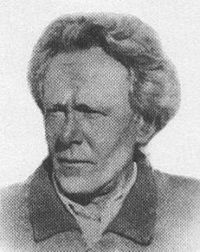



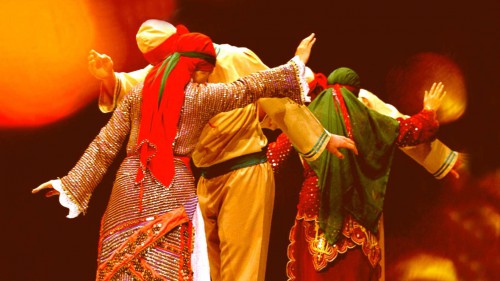

 del.icio.us
del.icio.us
 Digg
Digg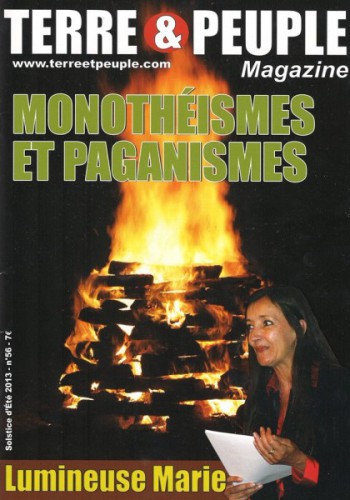


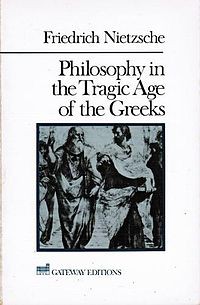 Nietzsche desde o princípio apresentou um apego ao mundo grego, uma idealização deste como estrutura social, ideológica e intelectual. Esta aproximação não é especificamente com a época clássica, mas com a época arcaica que é representada através dos poemas homéricos.
Nietzsche desde o princípio apresentou um apego ao mundo grego, uma idealização deste como estrutura social, ideológica e intelectual. Esta aproximação não é especificamente com a época clássica, mas com a época arcaica que é representada através dos poemas homéricos. Tomando esta citação compreendemos que a aristocracia se conforma a partir de sua riqueza, e devido a isto é fundamental entre os nobres fomentar vínculos com seus iguais, o qual se dá através da hospitalidade, já que se atende a alguém do mesmo valor moral e social. Neste sentido também se volta importante uma espécie de relação de parentesco dentro da que surge certo intercâmbio econômico representado em presentes (hedna). Na Odisséia se faz patente esta relação de hospitalidade através da narração da viagem de Telêmaco pelas cortes gregas, onde é bem recebido e por sua vez se atende tal como se formara parte da família, sem importar de onde venha, nem as fronteiras que os separam. Outro exemplo chave é o fato que conduz à Guerra de Tróia, a falta da hospitalidade de Paris (Alexandre) frente a Menelau ao raptar Helena.
Tomando esta citação compreendemos que a aristocracia se conforma a partir de sua riqueza, e devido a isto é fundamental entre os nobres fomentar vínculos com seus iguais, o qual se dá através da hospitalidade, já que se atende a alguém do mesmo valor moral e social. Neste sentido também se volta importante uma espécie de relação de parentesco dentro da que surge certo intercâmbio econômico representado em presentes (hedna). Na Odisséia se faz patente esta relação de hospitalidade através da narração da viagem de Telêmaco pelas cortes gregas, onde é bem recebido e por sua vez se atende tal como se formara parte da família, sem importar de onde venha, nem as fronteiras que os separam. Outro exemplo chave é o fato que conduz à Guerra de Tróia, a falta da hospitalidade de Paris (Alexandre) frente a Menelau ao raptar Helena.
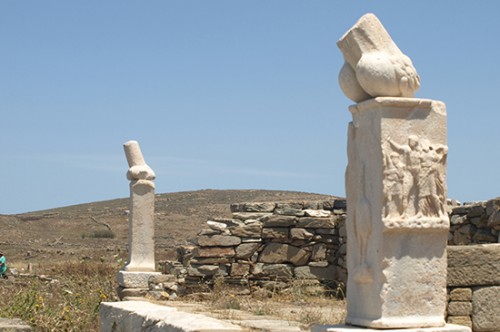
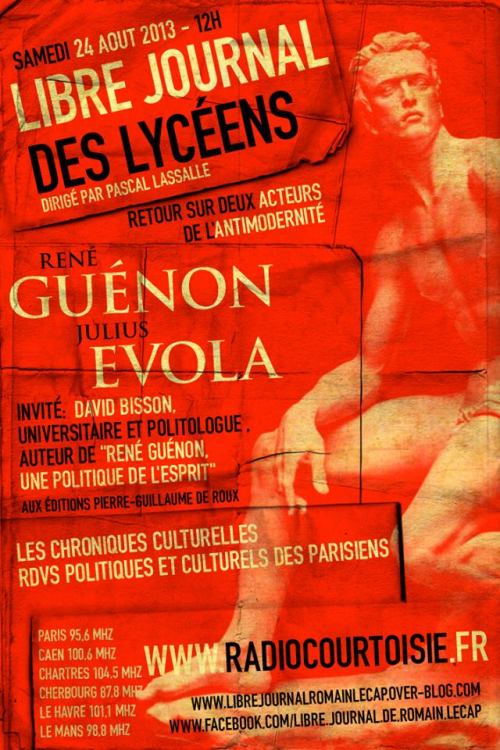
 Grande più o meno quanto l’intera Europa, la Cina è il paese più popoloso del pianeta, con 1 miliardo e 300 milioni di abitanti. Con l’introduzione della riforma economica capitalista, nel 1978 diventa il paese con lo sviluppo economico più rapido al mondo, sino a divenire nel 2010 il più grande esportatore di merci su scala globale, imponendosi prepotentemente dinanzi alla comunità internazionale come nuova superpotenza economica. Tuttavia la Cina è un paese dalle mille contraddizioni, una realtà che include – in maniera a dir poco stridente – 130 milioni di ricchi e 300 milioni di abitanti sotto la soglia di povertà, milioni di fruitori di elettrodomestici hi-tech nelle città e mancanza di acqua e luce elettrica nei villaggi.
Grande più o meno quanto l’intera Europa, la Cina è il paese più popoloso del pianeta, con 1 miliardo e 300 milioni di abitanti. Con l’introduzione della riforma economica capitalista, nel 1978 diventa il paese con lo sviluppo economico più rapido al mondo, sino a divenire nel 2010 il più grande esportatore di merci su scala globale, imponendosi prepotentemente dinanzi alla comunità internazionale come nuova superpotenza economica. Tuttavia la Cina è un paese dalle mille contraddizioni, una realtà che include – in maniera a dir poco stridente – 130 milioni di ricchi e 300 milioni di abitanti sotto la soglia di povertà, milioni di fruitori di elettrodomestici hi-tech nelle città e mancanza di acqua e luce elettrica nei villaggi.
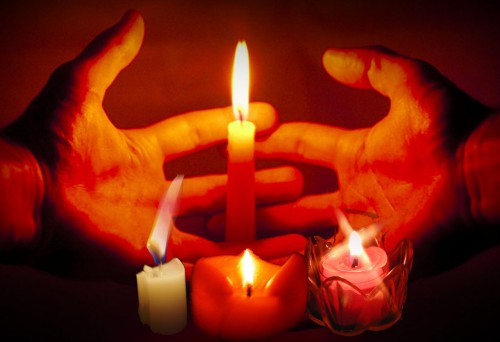
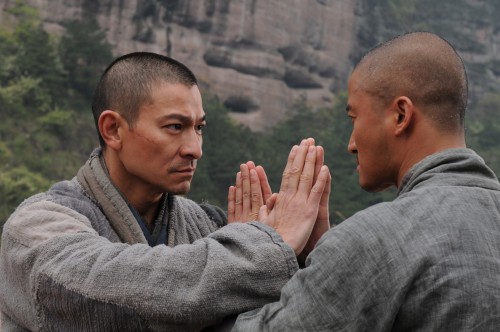




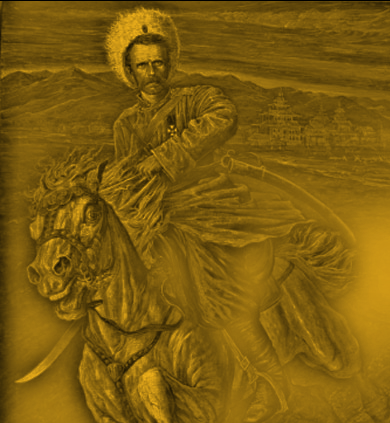



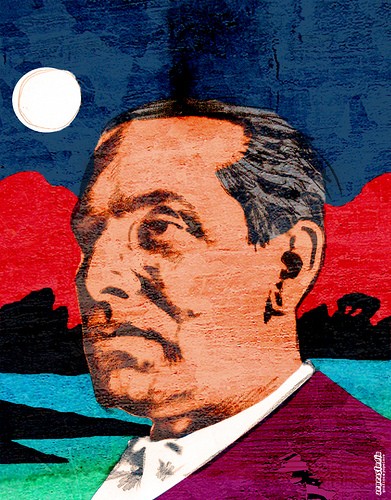
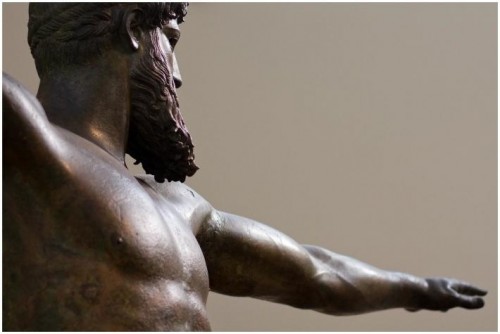
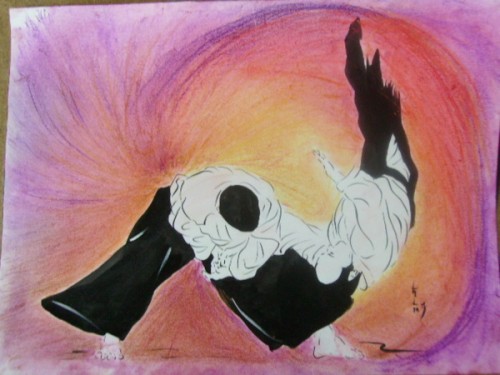


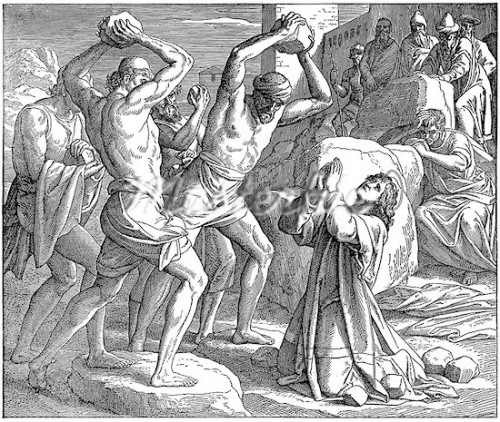

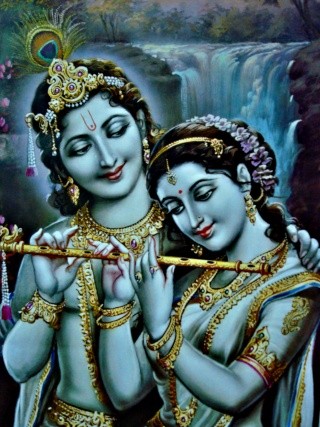 De vedische hymnen werden volgens de vedische overlevering zelf hoofdzakelijk gecomponeerd in de schoot van de Paurava-stam, de stam van Puru, één van de vijf zonen van Yayāti, een prins van de Maandynastie uit Prayāg (later bekend als Allāhābād) en veroveraar van het bovenstroomgebied van de Sarasvatī in het noordwesten van India. Deze was via een gemeenschappelijke voorvader, Manu Vaivasvata die de zondvloed overleefde, verwant met de Zonnedynastie uit Ayodhyā, waartoe Rāma (en later ondermeer ook de Boeddha) behoorde. Eén van de eerste Paurava-koningen heette Bharata. Het is naar hem dat India zichzelf nog steeds Bhāratavarsa of kortweg Bhārat noemt.
De vedische hymnen werden volgens de vedische overlevering zelf hoofdzakelijk gecomponeerd in de schoot van de Paurava-stam, de stam van Puru, één van de vijf zonen van Yayāti, een prins van de Maandynastie uit Prayāg (later bekend als Allāhābād) en veroveraar van het bovenstroomgebied van de Sarasvatī in het noordwesten van India. Deze was via een gemeenschappelijke voorvader, Manu Vaivasvata die de zondvloed overleefde, verwant met de Zonnedynastie uit Ayodhyā, waartoe Rāma (en later ondermeer ook de Boeddha) behoorde. Eén van de eerste Paurava-koningen heette Bharata. Het is naar hem dat India zichzelf nog steeds Bhāratavarsa of kortweg Bhārat noemt.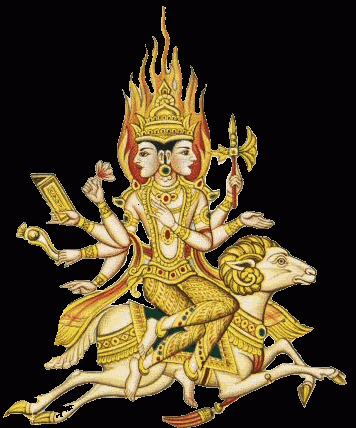 Tenslotte zijn uit al deze intellectuele bedrijvigheid nog de volgende vier disciplines voortgekomen: Mīmānsā, “duiding, exegese”; Nyāya, “oordeel, logica”; Purāna, “oudheid, geschiedenis”, weliswaar overlopend in mythologie; en Dharma-Śāstra, “ethiek”, maatschappelijke plichtenleer, sociologie. De eerste twee zijn het begin van de “zes standpunten” of wijsgerige scholen, met als overige vier Sānkhya, “opsomming”, elementenleer, dualistische kosmologie; Vaiśesika, “onderscheiding van bijzonderheden”, pluralistische kosmologie; Yoga, “beheersing”, leer van de controle over het gedachtenleven; en Uttara-Mīmānsā, “latere duiding” alias Vedānta, “het sluitstuk van de Veda”, d.w.z. de monistische uitwerking van de oepanisjadische leer van het Zelf.
Tenslotte zijn uit al deze intellectuele bedrijvigheid nog de volgende vier disciplines voortgekomen: Mīmānsā, “duiding, exegese”; Nyāya, “oordeel, logica”; Purāna, “oudheid, geschiedenis”, weliswaar overlopend in mythologie; en Dharma-Śāstra, “ethiek”, maatschappelijke plichtenleer, sociologie. De eerste twee zijn het begin van de “zes standpunten” of wijsgerige scholen, met als overige vier Sānkhya, “opsomming”, elementenleer, dualistische kosmologie; Vaiśesika, “onderscheiding van bijzonderheden”, pluralistische kosmologie; Yoga, “beheersing”, leer van de controle over het gedachtenleven; en Uttara-Mīmānsā, “latere duiding” alias Vedānta, “het sluitstuk van de Veda”, d.w.z. de monistische uitwerking van de oepanisjadische leer van het Zelf.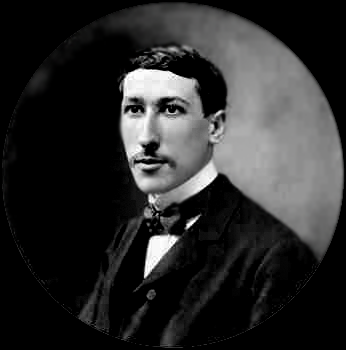
 Pero más recientemente todavía y con motivo de la publicación consecutiva de las Memorias de Eliade, la perspectiva sobre la irradiación guenoniana se ha ampliado y así hemos tenido la oportunidad de leer un erudito artículo del estudioso italiano Cristiano Grottanelli, bajo el acápite de «Mircea Eliade, Carl Schmitt, René Guénon, 1942», en la Revue de l’Histoire des Religions Tome 219, fascículo 3, julio-septiembre 2002, pp. 325-356, que arroja nuevas luces y sombras sobre la cuestión claramente anticipada en el título y que amplia el panorama con la mención del gran jurista y experto en derecho internacional, Carl Schmitt, tan apreciado en los comienzos de los años 30 por el régimen nacionalsocialista, como posteriormente repudiado tanto por la SS y el nazismo que representaban, como por sus vencedores aliados.
Pero más recientemente todavía y con motivo de la publicación consecutiva de las Memorias de Eliade, la perspectiva sobre la irradiación guenoniana se ha ampliado y así hemos tenido la oportunidad de leer un erudito artículo del estudioso italiano Cristiano Grottanelli, bajo el acápite de «Mircea Eliade, Carl Schmitt, René Guénon, 1942», en la Revue de l’Histoire des Religions Tome 219, fascículo 3, julio-septiembre 2002, pp. 325-356, que arroja nuevas luces y sombras sobre la cuestión claramente anticipada en el título y que amplia el panorama con la mención del gran jurista y experto en derecho internacional, Carl Schmitt, tan apreciado en los comienzos de los años 30 por el régimen nacionalsocialista, como posteriormente repudiado tanto por la SS y el nazismo que representaban, como por sus vencedores aliados. En vísperas de Navidad del mismo año Eliade recibió Tierra y mar de parte de Schmitt, y Goruneanu le informa que el número 3 de Zalmoxis que había enviado a Schmitt lo acompañaba a Jünger en su mochila. Y esta triple relación de personas, directa, en un caso, e indirecta en el otro – por medio de la revista Zalmoxis-, se repite en 1944 y posteriormente. El primer caso se concretó por un nuevo encuentro de Schmitt -quien consideraba a Guénon: “El hombre más interesante de su tiempo” según señala Eliade en Fragmentos de Diario- con éste en Lisboa. En la visita de 1942, conjetura Grottanelli, de acuerdo con los testimonios de una simpatía recíproca de ambos personajes sobre Guénon, conversarían sobre él posiblemente no sólo como maestro sino también como teórico de la Tradición. El segundo encuentro a que nos hemos referido de Jürgen y Eliade y que nos interesa menos en este trabajo, llevó a que un tiempo después Jünger y Eliade dirigieran la revista Antaios.
En vísperas de Navidad del mismo año Eliade recibió Tierra y mar de parte de Schmitt, y Goruneanu le informa que el número 3 de Zalmoxis que había enviado a Schmitt lo acompañaba a Jünger en su mochila. Y esta triple relación de personas, directa, en un caso, e indirecta en el otro – por medio de la revista Zalmoxis-, se repite en 1944 y posteriormente. El primer caso se concretó por un nuevo encuentro de Schmitt -quien consideraba a Guénon: “El hombre más interesante de su tiempo” según señala Eliade en Fragmentos de Diario- con éste en Lisboa. En la visita de 1942, conjetura Grottanelli, de acuerdo con los testimonios de una simpatía recíproca de ambos personajes sobre Guénon, conversarían sobre él posiblemente no sólo como maestro sino también como teórico de la Tradición. El segundo encuentro a que nos hemos referido de Jürgen y Eliade y que nos interesa menos en este trabajo, llevó a que un tiempo después Jünger y Eliade dirigieran la revista Antaios. Nuevamente en este texto transparente están reunidas por Eliade las dos puntas de su posición de aceptación y crítica en relación con Guénon y otros autores vecinos por las ideas: simbolismo e ideas tradicionales garantizadores de la universalidad de las creencias sagradas como fondo organizador, pero a partir de la investigación científica. El reunir y avecinar documentos no es erudición positivista ni vacía, sino que en el allegamiento surgen ante la mente sensible y perspicaz a los fenómenos aproximadamente las ideas y principios transcendentes que subyacen. Las hierofanías, como manifestaciones de lo sagrado, revelan uniones o integraciones mediadoras que ligan a los contrarios –lo profano y lo sagrado- con equilibrio, lo organizan en sistemas estructurales en el lenguaje del símbolo y del mito, y permiten al alma religiosa arcaica y actual ascender a los orígenes constitutivos. No hay una diferencia insalvable acerca del reconocimiento del fondo espiritual entre Eliade y Guénon, sí lo hay en cuanto al método de acceso. Firmeza de la tradición y de la iniciación en cuanto a Guénon, ingreso por el reconocimiento de los fenómenos sagrados reflejados en la conciencia que cada vez exigen mayor comprensión, para Mircea Eliade. Guénon aspira a romper con lo profano para tener acceso no reflejo, sino directo a lo sagrado; Eliade, se sumerge en la dialéctica de lo sagrado y lo profano que acompaña a la vida del cosmos y la sociedad. Lo primero da una existencia digna de iniciados; lo segundo, de hombres en el mundo vitalmente sacro, que eligen diferentes destinos.
Nuevamente en este texto transparente están reunidas por Eliade las dos puntas de su posición de aceptación y crítica en relación con Guénon y otros autores vecinos por las ideas: simbolismo e ideas tradicionales garantizadores de la universalidad de las creencias sagradas como fondo organizador, pero a partir de la investigación científica. El reunir y avecinar documentos no es erudición positivista ni vacía, sino que en el allegamiento surgen ante la mente sensible y perspicaz a los fenómenos aproximadamente las ideas y principios transcendentes que subyacen. Las hierofanías, como manifestaciones de lo sagrado, revelan uniones o integraciones mediadoras que ligan a los contrarios –lo profano y lo sagrado- con equilibrio, lo organizan en sistemas estructurales en el lenguaje del símbolo y del mito, y permiten al alma religiosa arcaica y actual ascender a los orígenes constitutivos. No hay una diferencia insalvable acerca del reconocimiento del fondo espiritual entre Eliade y Guénon, sí lo hay en cuanto al método de acceso. Firmeza de la tradición y de la iniciación en cuanto a Guénon, ingreso por el reconocimiento de los fenómenos sagrados reflejados en la conciencia que cada vez exigen mayor comprensión, para Mircea Eliade. Guénon aspira a romper con lo profano para tener acceso no reflejo, sino directo a lo sagrado; Eliade, se sumerge en la dialéctica de lo sagrado y lo profano que acompaña a la vida del cosmos y la sociedad. Lo primero da una existencia digna de iniciados; lo segundo, de hombres en el mundo vitalmente sacro, que eligen diferentes destinos.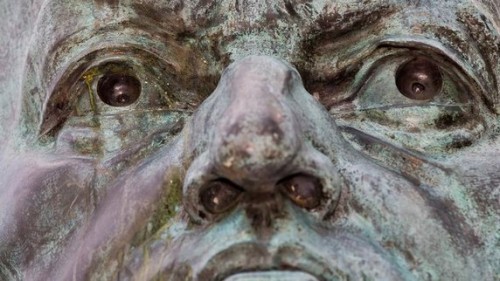

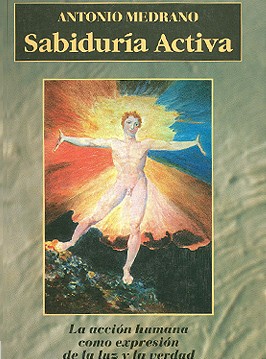 Pero, ¿cómo podría definirse la vida? ¿Qué es lo que la hace tan atractiva y valiosa?
Pero, ¿cómo podría definirse la vida? ¿Qué es lo que la hace tan atractiva y valiosa? En la vida humana es elemento esencial la dimensión trascendente. Siendo el hombre un ser espiritual, para que su vida discurra de forma sana, libre y feliz, tiene que dar a su vivir una orientación vertical, que lo proyecte hacia lo alto y tenga siempre en cuenta cuenta su fin último. La verticalidad del Espíritu ha de afirmarse por encima de la horizontalidad terrena, material, anímica y biológica, imprimiendo a esta última orden, sentido, mesura y armonía. Para vivir con dignidad y plenitud, el ser humano tiene que dar prioridad a su vida interior, que es la que le constituye como persona. Allí donde la vida se quede en lo exterior, en lo superficial, en lo puramente material, olvidando la dimensión espiritual, perderá en calidad, altura, salud y autenticidad.
En la vida humana es elemento esencial la dimensión trascendente. Siendo el hombre un ser espiritual, para que su vida discurra de forma sana, libre y feliz, tiene que dar a su vivir una orientación vertical, que lo proyecte hacia lo alto y tenga siempre en cuenta cuenta su fin último. La verticalidad del Espíritu ha de afirmarse por encima de la horizontalidad terrena, material, anímica y biológica, imprimiendo a esta última orden, sentido, mesura y armonía. Para vivir con dignidad y plenitud, el ser humano tiene que dar prioridad a su vida interior, que es la que le constituye como persona. Allí donde la vida se quede en lo exterior, en lo superficial, en lo puramente material, olvidando la dimensión espiritual, perderá en calidad, altura, salud y autenticidad.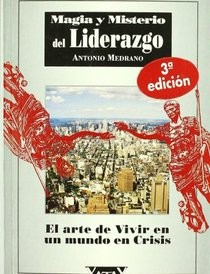 La civilización actualmente imperante, individualista, activista y materialista, desprincipiada, carente de principios y valores firmes, des-sacralizadora y profanadora de la realidad, se define por una pronunciada orientación antivida y por un impulso antivital. Odio a la vida, desprecio de la vida, miedo ante la vida, cansancio de vivir, náusea vital: estos vienen a ser los rasgos que resumen el tono existencial de la actual sociedad de masas dominada por la idolatría de lo efímero y contingente. Hay una evasión o huida de la vida que es consecuencia de lo que Max Picard llamó “la huida del Centro”, esto es, la huida o el alejamiento de Dios.
La civilización actualmente imperante, individualista, activista y materialista, desprincipiada, carente de principios y valores firmes, des-sacralizadora y profanadora de la realidad, se define por una pronunciada orientación antivida y por un impulso antivital. Odio a la vida, desprecio de la vida, miedo ante la vida, cansancio de vivir, náusea vital: estos vienen a ser los rasgos que resumen el tono existencial de la actual sociedad de masas dominada por la idolatría de lo efímero y contingente. Hay una evasión o huida de la vida que es consecuencia de lo que Max Picard llamó “la huida del Centro”, esto es, la huida o el alejamiento de Dios.
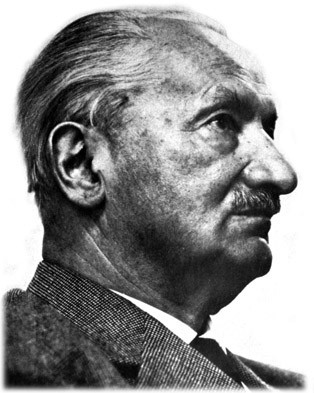
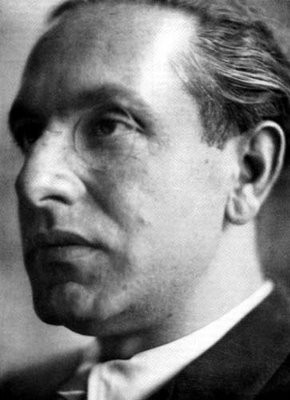 Bien qu’il faudrait un autre article pour développer ce point, Evola, même lorsqu’il se trompe métaphysiquement, offre au traditionaliste radical une œuvre dont les motifs boréens demandent une étude et une discussion approfondies. Mais étant donné l’argument ci-dessus, comment les incompatibilités radicales entre Heidegger et Evola peuvent-elles être réconciliées ?
Bien qu’il faudrait un autre article pour développer ce point, Evola, même lorsqu’il se trompe métaphysiquement, offre au traditionaliste radical une œuvre dont les motifs boréens demandent une étude et une discussion approfondies. Mais étant donné l’argument ci-dessus, comment les incompatibilités radicales entre Heidegger et Evola peuvent-elles être réconciliées ?

